Love it or hate it, a trip to New Orleans rarely happens without a stroll through this most infamous of neighbourhoods. When I was younger, Bourbon Street was electrifying—a place where debauchery is welcome and celebrated. Where everyone is free to be whatever sort of unique being they care to be and there is no judging (unless you count those religious nuts who walk around with placards. Oops, sorry. I did say no judging). Where there is no shortage of cheap drinks, loud music and bare skin.
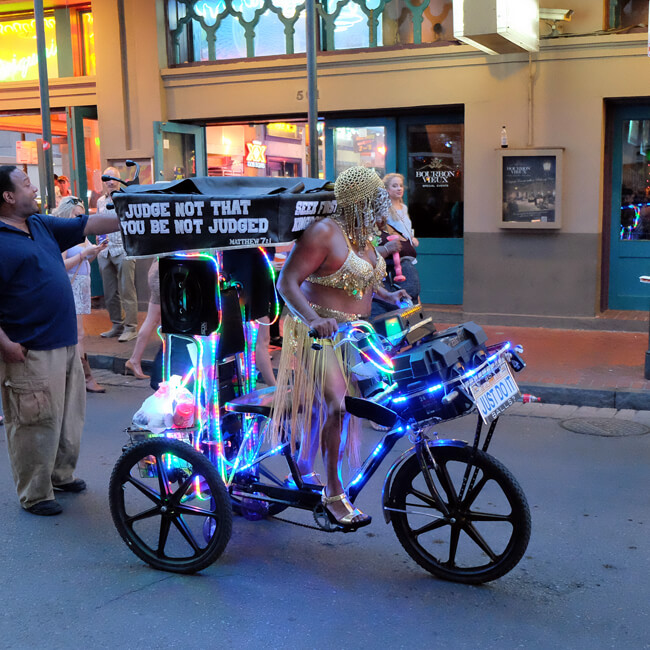
These days, Bourbon Street is still a source of entertainment. I love to see the freaks come out. I like to people watch. Where else can you follow a jazz band down the street as you go about your day? The easy feel of meandering along the street, appreciating the architecture, the history appeals. I much less enjoy the acrid smell that assaults the nostrils the second you enter Bourbon off of Canal. If it hasn’t rained in a while, it’s unbearable. The crowds, too, can be a bit overwhelming on a busy Saturday night, and much more so during a festival like Mardi Gras or Jazz Fest. Bourbon Street tempered with the rest of the beautiful city is how I like it best.
“New Orleans had history, culture, and the poignancy of tragedy and past grandeur. It had a European look, a Caribbean feel, an expatriated vibe, an abundance of historic housing at low rent, a pervasive booziness, and music, food and festivity to boot. It was authentic!”
-Richard Campanella
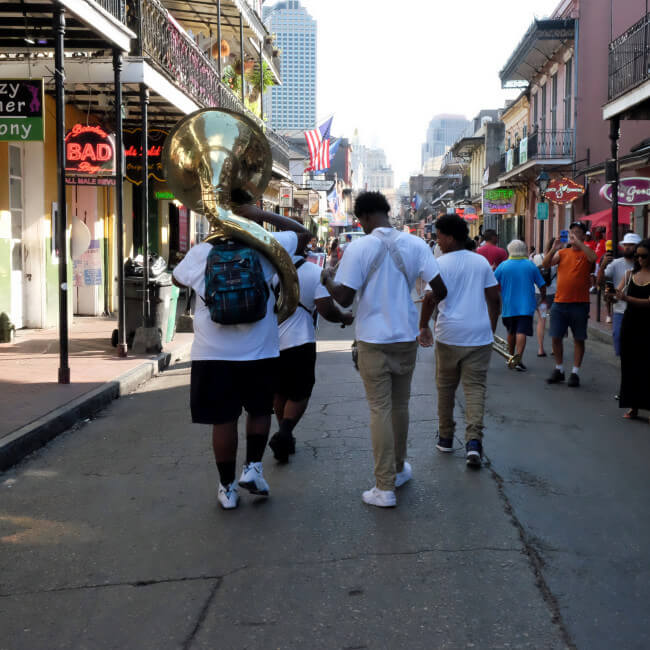
But for all the criticism it may garner from locals and (perhaps arrogant) tourists, the French Quarter is not without its charms. There are many great restaurants (try NOLA for top-notch food and service, or Fiorella’s for what may be the best fried chicken you’ve ever had), some fabulous hotels and hotel bars (try Hotel Monteleone’s Carousel Bar and Lounge), antique shops (several along Royal St.), unique gifts and souvenirs (the Voodoo shop or the French Market), history (just take a stroll or visit The Louisiana State Museum). You can grab a muffaletta sandwich at Central Grocery and enjoy it in a shady patch of Jackson Park. Or sit in the square and listen to the abundant free jazz.
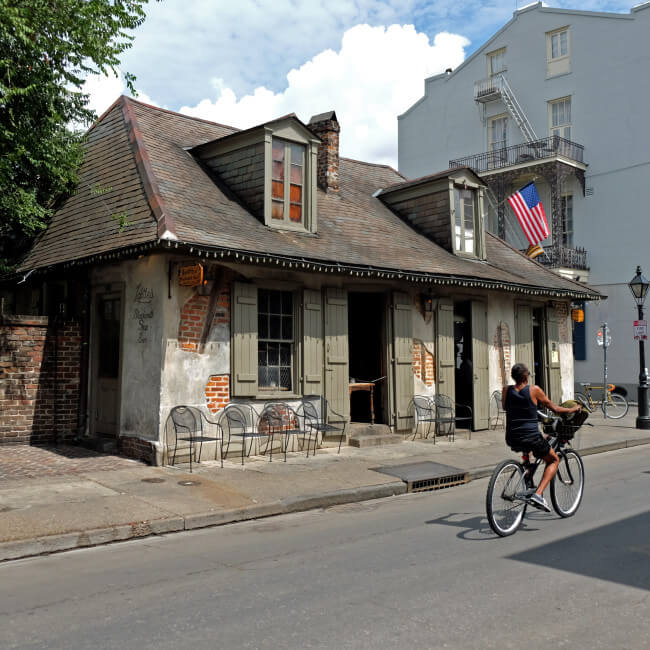
Lafitte’s Blacksmith Shop & Bar, here since the early 1700s
Visit the artists that line the fence around Jackson Park and take home something original. Many of these artists use found objects in their work. A few years back I bought two pieces from an artist there. One was created on a cabinet door from refuse that Hurricane Katrina left in its wake, the other included a stray tambourine piece from a Dr. John show. This trip, my son bought some voodoo dolls for some friends back home and a deck of tarot cards for another. Certainly not your typical travel gifts, but so much fun to both seek out and give.
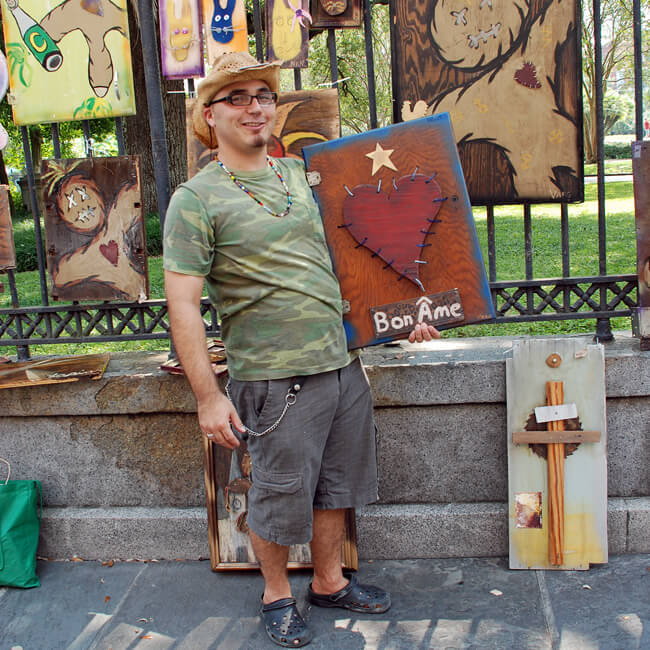
“Good Soul”
You can take cooking classes in the Quarter. Why not learn how to make pralines, gumbo, blackened catfish or jambalaya? There are tours to take, both day and night, with several themes available. We took a vampire tour through Haunted History Tours a couple years back, which was a lot of fun. The guide was theatrical, knowledgeable and very entertaining. There are other companies that offer everything from history tours to swamp tours to pub tours. Who wouldn’t love a pub crawl with history? And the swamp tour I took was fascinating, educational and creepy. Café du Monde is in the Quarter, and has been serving coffee and beignets since 1862.

If you’re interested in a more scholarly view on the French Quarter, I urge you to check out some of Richard Campanella’s writings. You’ll find an excellent article called “Hating Bourbon Street” here. It discusses the politics of authenticity in New Orleans. It’s an brilliantly written perspective. Campanella says that Hurricane Katrina changed his view of Bourbon Street. He praises the role the neighbourhood played in revitalizing the city after the devastating hurricane. The French Quarter was the first area of the city to open shops, offering food to those coming to help rebuild, jobs to locals, and money into the city coffers. I encourage you to read an excerpt from his book here. It brings to light a different view of a neighbourhood not often taken seriously.
Love it or hate it, there’s no denying the French Quarter is unique. What’s your take?
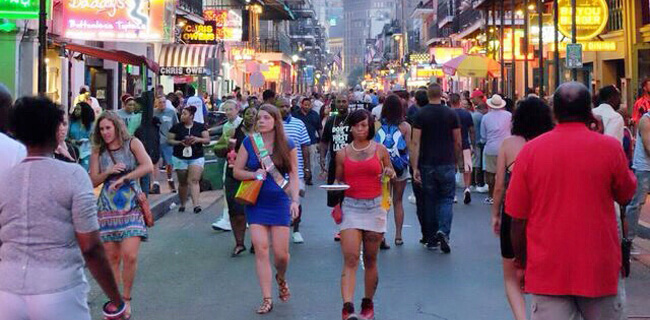




Love your photos & commentary.
Thank you!! Glad you enjoyed reading.